

Max Davies
2026 Toyota HiAce review
2 Hours Ago
Despite being more than 10 years old, the Nissan 370Z shows promising abilities on the track – but the electronics intervene more than we'd like.
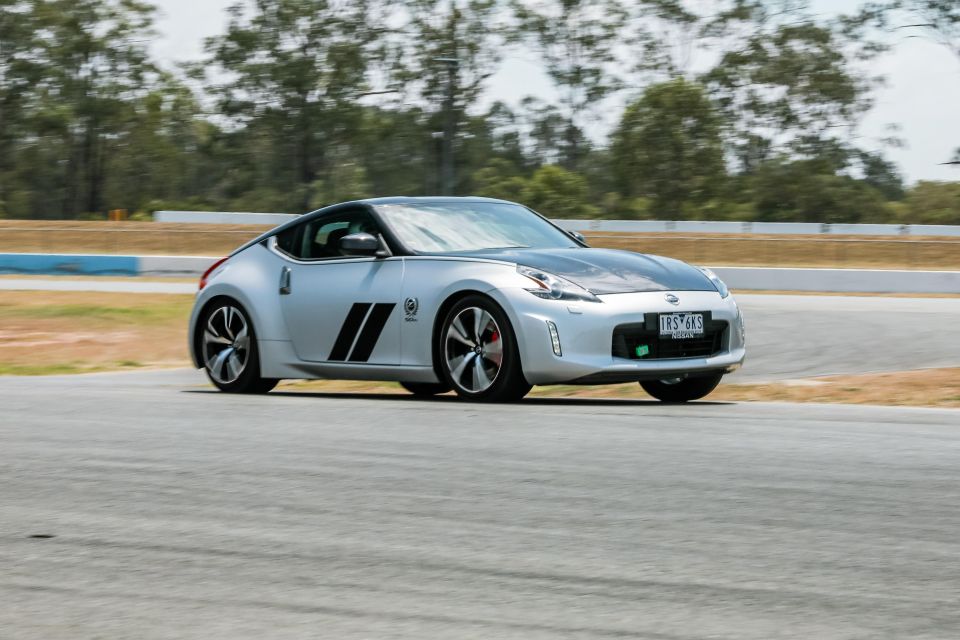
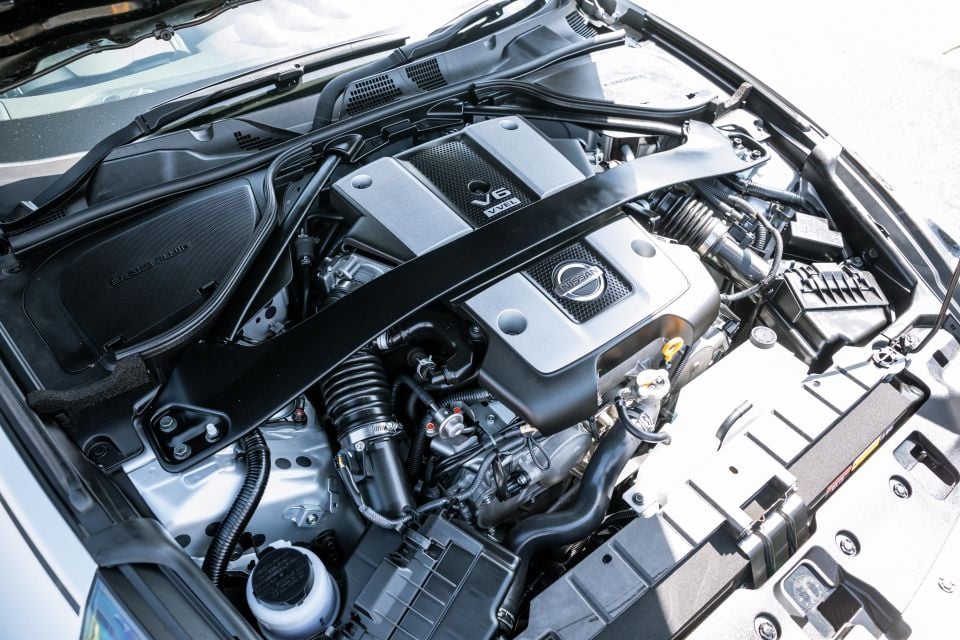

Performance Editor

Performance Editor


Performance Editor

Performance Editor
Where expert car reviews meet expert car buying – CarExpert gives you trusted advice, personalised service and real savings on your next new car.
For all its track ability the 370Z easily transfers that into a capable road machine.
The brakes and suspension inspire confidence without being overly nervous. The smooth power band of the engine mean there are no major surprises from liberal a use of the throttle.
Overall, the package works well across a variety of roads, but I personally would like it to challenge me more as a driver.
The Nissan 370Z really intrigued and challenged me on the track. On paper it ticks a lot of boxes, a two-seat rear-wheel drive sports car with a naturally-aspirated V6, but I felt like I wasn’t allowed to do what I wanted with it.
This car has so much potential in a market niche that’s all about driver engagement and a raw driving experience, plus has many of the attributes needed and the ability to achieve very competitive lap times.
Yet it left me pondering what could have been at the end of my outing.

The 370Z is powered by a 3.7-litre naturally-aspirated V6, with 265kW and 363Nm. Although it’s more than driveable at lower revs, it seemed to really prefer living in the higher rev range, up above 6000rpm.
I would have liked the engine to have a greater focus on lower-end torque and get momentum going a bit earlier.
On the track it took time to build speed and didn’t rev out as quickly as I would like, especially exiting corners. I would usually like to be in as high a gear as possible off a corner. Firstly you save on gearshifts and secondly, it’s better for traction.
This engine didn’t enable me to do this how I would have liked, but it was still quick, smooth and very easy to drive.
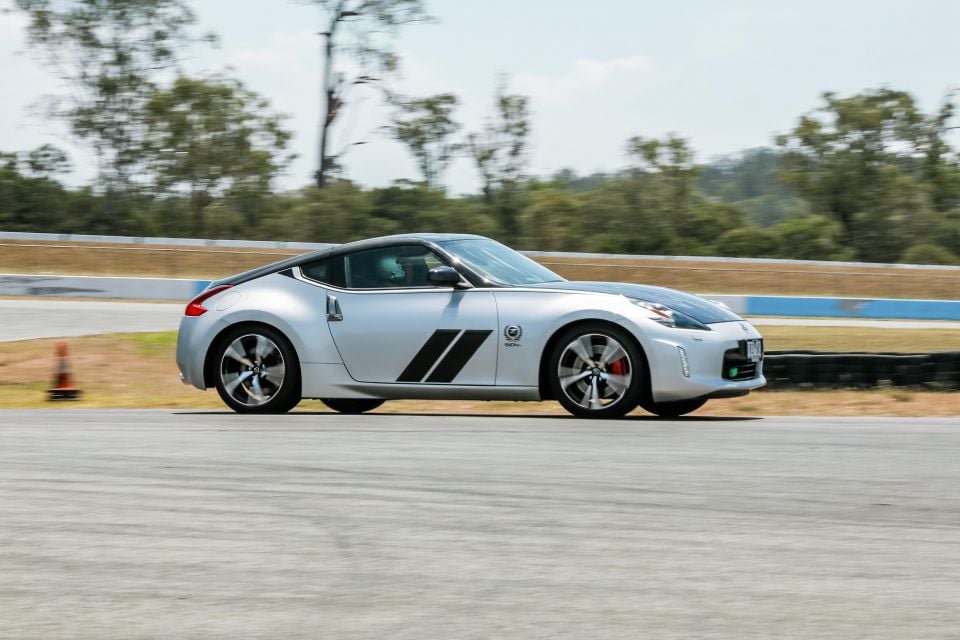
The brakes were very consistent across all laps. I liked how the brake pedal felt connected and in sync with the damper movement.
As the brake pedal built up load, so did the dampers and that enabled me to really modulate the brakes well.
Occasionally I was restricted from fully committing on the brakes because of interference from the stability control – if I was able to switch this off completely it would have helped massively.
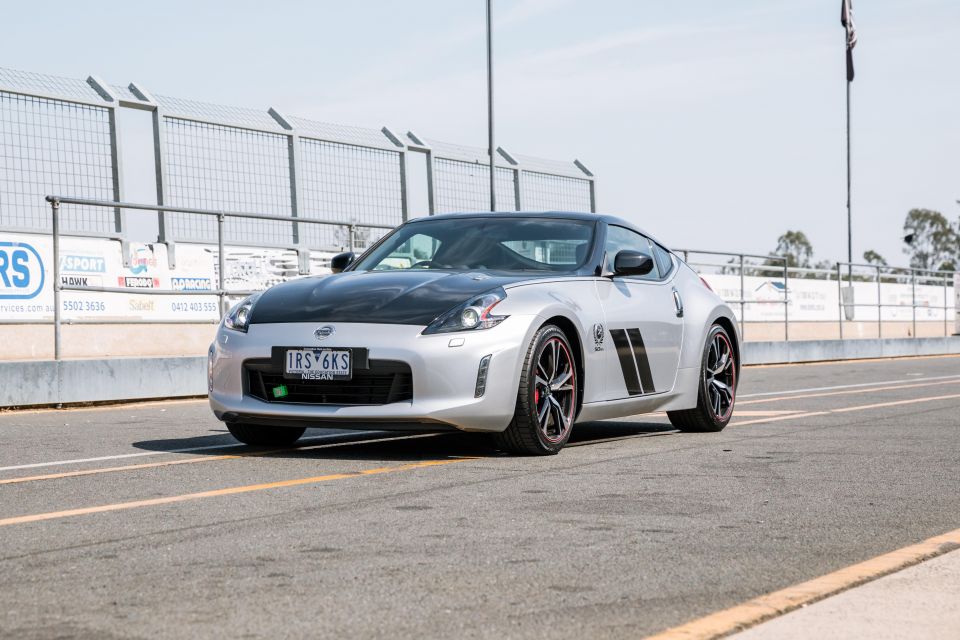
The chassis really has a lot of potential, yet the way the engine and differential work together doesn’t allow you to push the boundaries of what it’s capable of. They live inside the limits of the chassis and could definitely be taken to another level.
This was a strange review for me, as I left the track not really understanding the full potential of the chassis. I was never really was able to challenge it and extract everything I wanted from it.
I wanted to experience the feeling I get instantly from a Toyota 86 or Mazda MX-5, where I feel like I can to straight to the limit and live there constantly, and it didn’t quite offer that. I don’t blame the chassis, it’s a combination of factors which are relatively easy to solve.
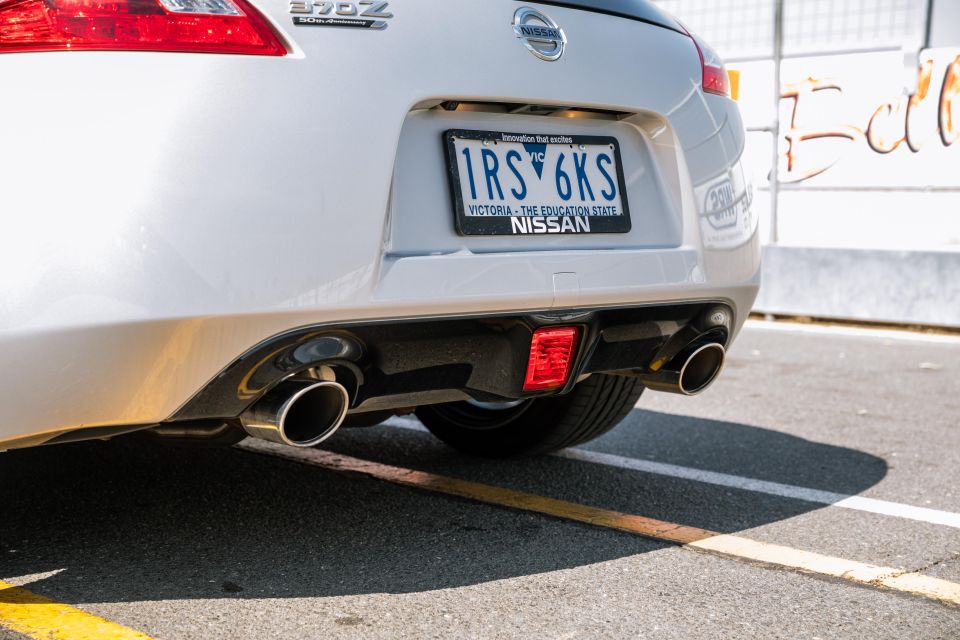
The gearbox didn’t really excite me, and lacked the engagement required to make you actually forget it was an automatic.
I found the shifts a bit delayed, especially with upshifts. In a sports car with paddle-shifters I want it to be sharp and responsive to my commands, otherwise you just feel like it’s a token gesture every time you go for a gear.
The manual gearbox definitely wouldn’t be a bad choice for a car like this. You buy this car for a certain experience and I didn’t feel that I got it from the seven-speed ‘sports’ automatic.
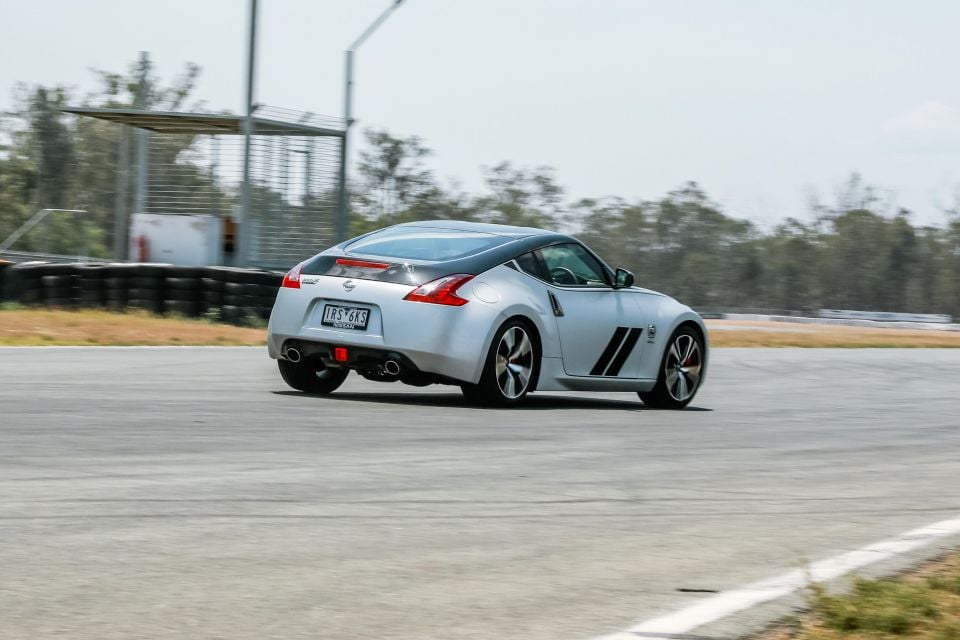
The differential worked reasonably well, but needs some adjustment to really perform on the track. The initial part of the locking is very soft before stepping up quite a bit if you attack the throttle more aggressively.
This actually gave a very neutral feeling to the car’s balance on early throttle, meaning I couldn’t rebalance the car from an understeer situation without adding a lot (too much) throttle.
I wanted the 370Z to feel a bit more biased towards oversteer from the differential to really make the most of it.

The suspension really impressed me, it was very supportive and worked in harmony with the chassis. There was a nice amount of initial roll, which helps with traction as well as giving the driver confidence.
When you really lean on the car and get more aggressive with your driving, it starts to offer the support you want as well. The 370Z offers a really nice balanced damper curve which fits nicely with the chassis.
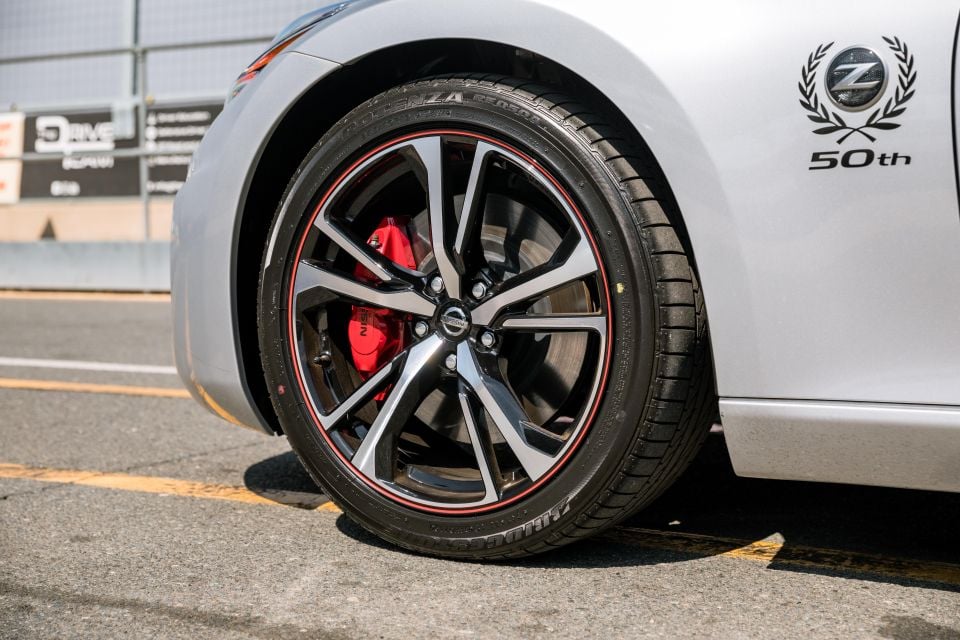
Despite the steering being on the lighter side, it was still precise on the track. It just felt a little bit disconnected, but because the suspension was working so well you still got a good amount of feedback.
The Bridgestone Potenza RE050a tyres were pretty good on the track and reasonably progressive, but because I couldn’t fully commit to the corners, I found it hard to get clear understanding of them.

I ran with the traction control off, which is achieved by the simple press of a button. I did however struggle with the fact that there was still some interference from the stability control.
Whenever I attacked a corner with any intent on the brakes, the car would immediately try and straighten me and stop me from rotating the car.
To get the entry of the corner to work as I wanted, I had to be very smooth and trick the car into thinking that I wasn’t doing anything silly.
I really found this frustrating on the track and I’m surprised there is this level of control on a car aimed at the driver’s market. This really cost a lot of lap time and also hurt the feeling of engagement and control.
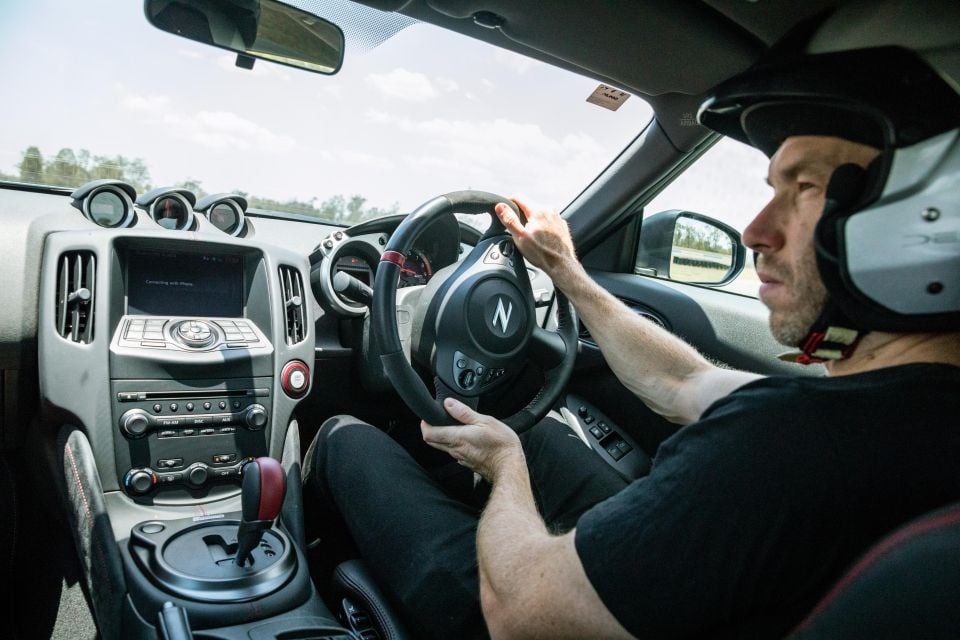
The seating position was really good. I liked the angle and the fact that there was plenty of adjustment available.
Although the steering wheel felt a bit big, the Alcantara trim is great for track work.
I found the angle of the steering wheel relative to the driver was just a bit off, angling too far back. The gear shift paddles were located a bit too far away for me personally and I found I was almost reaching for them.
The paddles are fixed rather than moving with the wheel, which meant they weren’t always easy to grab mid-corner.
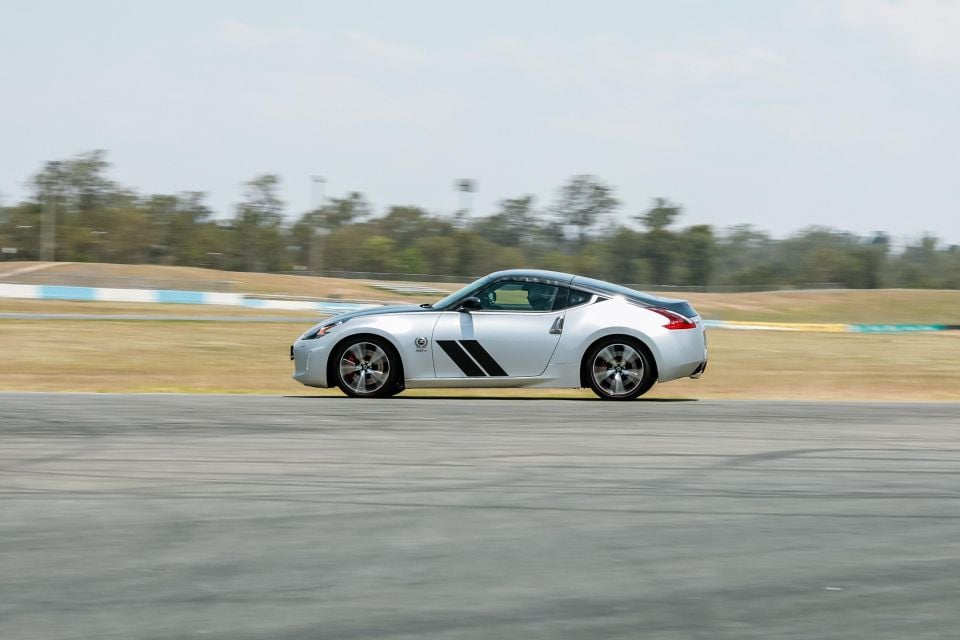
For a situation where I couldn’t really extract everything I wanted from a car, it actually did a pretty good time.
I achieved a best lap of 61.01 seconds, which places it ahead of some pretty quick hot hatch’s and into 12 spot on the CarExpert leaderboard.
I really believe it had the potential to be a sub 60-second car around the track and would love to have another go with all the safety systems switched off.
There are so many good things about the 370Z, I really want to see Nissan challenge the driver more when it comes to future generations of this car.
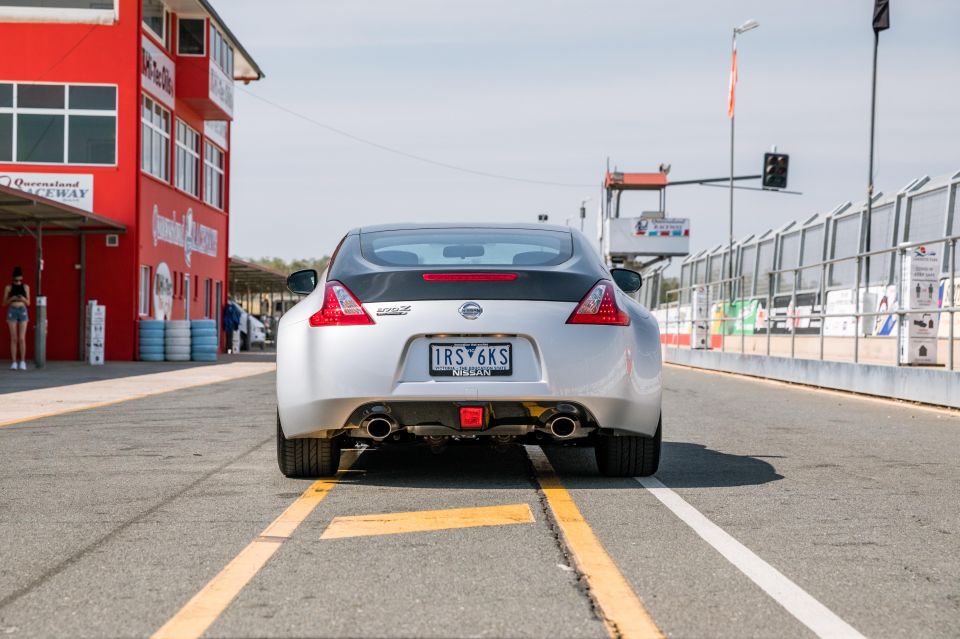
Click the images for the full gallery
MORE: Nissan 370Z news and reviews MORE: Nissan news and reviews
Where expert car reviews meet expert car buying – CarExpert gives you trusted advice, personalised service and real savings on your next new car.


Max Davies
2 Hours Ago


William Stopford
18 Hours Ago


Ben Zachariah
19 Hours Ago


Derek Fung
19 Hours Ago


Matt Campbell
1 Day Ago


William Stopford
2 Days Ago